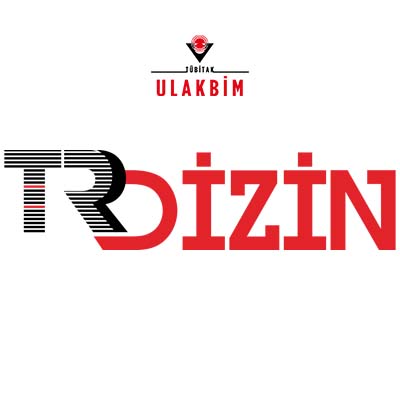Kuvvet ve Enerji Ünitesinde Robotik Kodlama Etkinliklerinin Ortaokul Öğrencilerinin Fene Yönelik Tutumlarına Etkisi (The Effects of Robotic Coding Activities in The Force and Energy Unit on The Attitude of Elemantary School Students Towards Science)
DOI:
https://doi.org/10.15659/ankad.v5i2.135Anahtar Kelimeler:
Robotik kodlama- fen eğitimi- tutum- cinsiyetÖzet
Bu araştırmada kuvvet ve enerji ünitesinde robotik kodlama etkinliklerinin ortaokul öğrencilerinin fene yönelik tutumlarına etkisi araştırılmıştır. Araştırmanın örneklemini Ankara ili Çubuk ilçesinde bulunan bir ortaokulun yedinci sınıfında 2019–2020 eğitim–öğretim yılı güz döneminde öğrenim gören 45 öğrenci oluşturmaktadır. Araştırmada ön test son test kontrol gruplu yarı deneysel desen kullanılmıştır. Verilerin analizinde SPSS paket programı kullanılmıştır. Robotik kodlama etkinliklerinin öğrencilerin fene yönelik tutumları ve cinsiyet faktörünün öğrencilerin tutumlarına etkisinin araştırıldığı çalışmada uygulanan deneysel işlem sonrasında gruplar arasında anlamlı bir fark oluşmadığı gözlemlenmiştir. Robotik kodlama etkinliklerinin sonunda öğrencilerin fene yönelik tutumları anlamlı düzeyde değişmemiş ve anlamlı düzeyde cinsiyet farkı oluşmamıştır. Araştırma daha büyük bir örneklemle farklı sınıf düzeylerinde uygulanabilir. Ayrıca öğrencilerin tutumlarındaki değişikliğin daha iyi gözlemlenebilmesi için ideal bir zaman diliminde uygulanabilir.
Referanslar
Alimisis, D. (2013). Educational robotics: open questions and new challenges. Themes in Science & Technology Education, 6(1), 63-71.
Angeli, C., Voogt, J., Fluck, A., Webb, M., Cox, M., Malyn-Smith, J. & Zagami, J. (2016). A K-6 computational thinking curriculum framework: Implications for teacher knowledge. Journal of Educational Technology & Society, 19(3), 47–57.
Barak, M., & Assal, M. (2018). Robotics and STEM learning: students’ achievements in assignments according to the P3 Task Taxonomy practice, problem solving, and projects. International Journal of Technology and Design Education, 28(1), 121–144. https://doi.org/10.1007/s10798-016-9385-9
Benitti, F.B.V. (2012). Exploring the educational potential of roboticsin schools: a systematic review, Computers and Education, 58(3), 978–988.
Berland, M., & Wilensky, U. (2015). Comparing virtual and physical robotics environments for supporting complex systems and computational thinking. Journal of Science Education and Technology, 24(5), 628–647.
Blosser, Patricia E. (1984). Attitude research in science education. Columbus, OH: ERIC Clearinghouse for Science, Mathematics and Environmental Education.
Büyüköztürk, Ş. (2016). Sosyal bilimler için veri analizi el kitabı, Ankara: Pegem Yayıncılık.
Coxon, S. V. (2012). The malleability of spatial ability under treatment of a FIRST LEGO League-based robotics simulation. Journal for the Education of the Gifted, 35(3), 291- 316.
Czerkawski, B. (2015). Computational thinking in virtual learning environments. in proceedings of e-learn. World Conference on e-Learning in Corporate, Government, Healthcare, and Higher Education 2015 (pp. 993–997).
Eguchi, A. (2010). What is educational robotics? Theories behind it and practical implementation. In Society for information technology & teacher education international conference (pp. 4006–4014). Jacksonville: Association for the Advancement of Computing in Education (AACE).
Karasar, N. (2016). Bilimsel araştırma yöntemleri (31. Baskı). Ankara: Nobel Akademik.
Kim, C., Kim, D., Yuan, J., Hill, R. B., Doshi, P. & Thai, C. N. (2015). Robotics to promote elementary education pre-service teachers’ STEM engagement, learning, and teaching. Computers & Education, 91, 14–31. https://doi.org/10.1016/j.compedu.2015.08.005
Legare, C. H., Gelman, S. A., & Wellman, H. M. (2010). Inconsistency with prior knowledge triggers children’s causal explanatory reasoning. Child Development, 81(3), 929–944.
Mertens, D.M. (2005). Research and evaluation in education and psychology: integrating diversity with quantitative, qualitative, and mixed methods. Thousand Oaks, CA: Sage.
Mikropoulos, T. A. & Bellou, I. (2013). Educational robotics as mindtools. Themes in Science and Technology Education, 6(1), 5–14.
Milli Eğitim Bakanlığı (2018). Fen bilimleri dersi öğretim programı. Milli Eğitim Bakanlığı. Ankara.
Morrell, P.D. and Ledeerman. N.G. (1998). Students' attitudes toward school and classroom science: are they ındependent phenomena? School Science and Mathematics. 98(2), 76- 84.
National Research Council. (2010). Report of a workshop n the scope and nature of computational thinking. Washington, DC: The National Academies.
National Research Council (2011). Successful K-12 STEM Education: Identifying Effective Approaches in Science, Technology, Engineering, and Mathematics. Washington, DC: The National Academies.
Next Generation Science Standards (2013). Next generation science standards. Retrieved from http://www.nextgenscience. org/next-generation-science-standards.
Papert, S. (1980). Mindstorms: Children, computers and powerful ideas. New York: Basic Books.
Papert, S. (1993). Mindstorms: Children, computers and powerful ideas (2nd ed.). New York, NY: Basic Books.
Piaget, J. (1965). The moral judgement of the child. New York: Free Press.
Puntambekar, S. & Kolodner, J. L. (2005). Distributed scaffolding: Helping students learn science from design. Journal of Research in Science Teaching, 42(2), 185–217.
Repenning, A., Webb, D. & Ioannidou, A. (2010) Scalable game design and the development of a checklist for getting computational thinking into public schools. In: Proceedings of the 41st ACM technical symposium on computer science education. Milwaukee, WI, pp 265–269.
Shrigler, Robert L., Koballa, Thomas R. & Simpson, R. D. (1988). Defining attitude for science educators. Journal of Research in Science Teaching, 25(8), 659-678.
Sullivan, F. R. (2008). Robotics and science literacy: Thinking skills, science process skills, and systems understanding. Journal of Research in Science Teaching, 45(3), 373–394.
Sullivan, F. R. (2011). Serious and playful inquiry: Epistemological aspects of collaborative creativity. Journal of Educational Technology and Society, 14(1), 55–65.
Sullivan, F. R. & Heffernan, J. (2016). Robotic construction kits as computational manipulatives for learning in the STEM disciplines. Journal of Research on Technology in Education, 48(2), 105–128.
Süzen, S. (2004). 7. sınıf fen bilgisi dersinde fiziksel ve kimyasal değismeler konusunda, öğrencilerin, bilişsel alanın bilgi ve kavrama düzeyleri ve tutumları üzerine yapısalcı öğrenme modelinin etkisi. Yüksek Lisans Tezi, Gazi Üniversitesi, Eğitim Bilimleri Enstitüsü, Fen Bilgisi Öğretmenliği Anabilim Dalı, Ankara.
Turhan, E. A., Kılıç, E., Boğar, Y. & Sarıkaya, M. (2008). Sekizinci sınıf öğrencilerinin mıknatıs ve özellikleri konusunu kavramalarına ve Fene karsı tutumlarına çoklu zekâ kuramına dayalı öğrenme modeli ve cinsiyetin etkileri. VIII. Ulusal Fen Bilimleri Kongresi, Fen ve Teknoloji Eğitimi Bildiri Özetleri Kitabı, s. 155. 27-29 Ağustos, Bolu.
Vygotsky, L. S. (1978). Mind in society: The development of higher mental processes. Cambridge, MA: Harvard University Press.
Wilensky, U. (2001). Modeling nature’s emergent patterns with multi-agent languages. In the Proceedings of EuroLogo, 1–6. Retrieved May 2015, from http://citeseerx.ist.psu.edu/viewdoc/download?doi=10.1.1.294.8094&rep=rep1&type=p df.
Williams, D. C., Ma, Y., Prejean, L., Ford, M. J. & Lai, G. (2008). Acquisition of physics content knowledge and scientific inquiry skills in a robotics summer camp. Journal ofResearch on Technology in Education, 40(2), 201–216.
Wing, J. M. (2006). Computational thinking. Communications of the ACM, 49(3), 33–35.
Yadav, A., Zhou, N., Mayfield, C., Hambrusch, S. & Korb, J. T. (2011). Introducing computational thinking in education courses. In the Proceedings of the 42nd ACM technical symposium on computer science education (pp. 465–470). Retrieved February 2016, from http://cs4edu.cs.purdue.edu/_media/sigcse11-final.pdf.
Yayınlanmış
Nasıl Atıf Yapılır
Sayı
Bölüm
Lisans
Telif Hakkı (c) 2024 Anadolu Kültürel Araştırmalar Dergisi (ANKAD)

Bu çalışma Creative Commons Attribution-NonCommercial 4.0 International License ile lisanslanmıştır.













